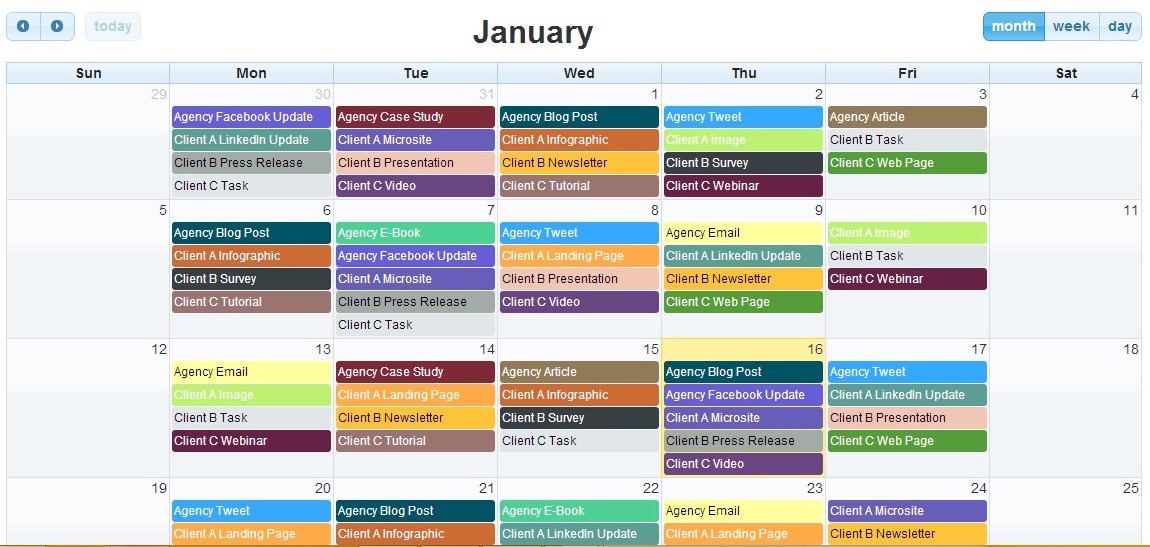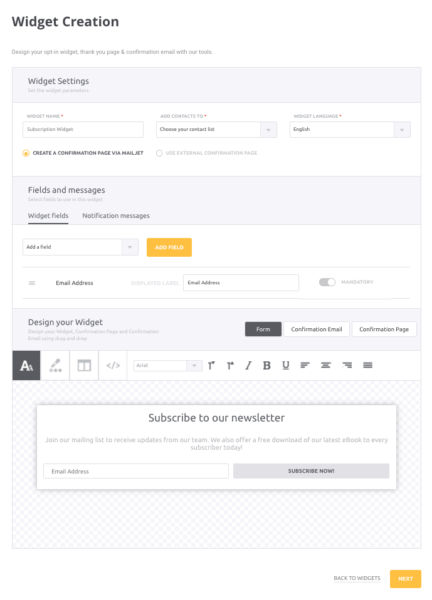Right on cue, here’s “The best email newsletter post ever”.
What is an email newsletter?
Basically, an email newsletter is a type of email sent out by companies or individuals to a subscriber list (existing or potential customers that have signed up to receive marketing communications) that’s contains valuable content (guides, blog posts, news, products reviews, personal recommendations, tips, announcements and other resources).
Newsletters are an essential part of the email marketing strategy, as they allow businesses to nurture their contacts, by establishing themselves as key players in their industry, sharing insights and highlighting new products that will drive traffic to the website.
What are the advantages and the drawbacks of sending an email newsletter?
The immense popularity of email newsletters isn’t a coincidence. Email marketing is one of the most effective marketing channels. The average ROI is £38 for each pound invested and 72% of customers prefer to be approached via email. Well-designed marketing emails sent regularly, like email newsletters, guarantee constant website traffic, webinars and other event registrations and product sales. As newsletters statistically form the largest part of all marketing emails sent, they hold a great deal of marketing potential.
Wondering whether setting up an email newsletter is the right step for your business? Let’s have a look at the advantages and drawbacks of sending one!
Strengths of sending an email newsletters
Creating a newsletter is not just a way to keep your customers informed about your new product or features, but has many other advantages.
A newsletter is a constant source of traffic
One of the main reasons for creating a newsletter is that it generates regular website traffic. Organic engagement on social media platforms like Facebook is declining dramatically. Banner advertising is rarely noticed in the era of ad blockers. Written press releases sent by email will often be ignored by journalists and online editors.
Luckily, this is not true for newsletters. Emails that reach someone’s inbox are usually seen, and the likelihood that they will be opened is high, provided that the subject line is appealing and the sender is recognized (so make sure your readers know who you are!). If your newsletter is well designed and it contains relevant content, this will enhance your chances of the reader clicking on the calls-to-action for more information.
Email Newsletter generates considerable savings
Money is important for marketers. So anything that saves you money should be a top priority. And newsletters do.
Don’t underestimate how much money email marketing saves you, compared to other using other marketing tools. Paid advertisements like banner advertising, Google AdWords, Facebook Ads and influencer marketing are considerably more expensive than email newsletter marketing. The cost of a newsletter software is usually low and labor costs are also lower, as the newsletter is created and optimized faster than other media.
Easy performance measurement
The success of a marketing tool is based on whether it reaches the required relevance or not. And in order to find out, performance must be measurable.
Measuring the performance of an email newsletter is simple. Your email statistics provide you with all the information you need to do this: open rates, click rates, unsubscribe rates, bounces, which user terminals were used to open the newsletter and when, which links are clicked on, etc. These KPIs will help you accurately calculate your ROI and produce target-audience relevant newsletter content.
Corresponding KPIs Newsletter
Define rough content
Planning the topic of your newsletter is closely connected to the objectives you have defined, but coming up with content can be hard at first.
To find inspiration, analyze your competitors’ newsletters (of course, avoid copying it and concentrate on what else you can offer to make yours better 💪) and newsletters of companies that you think are successful at email marketing. This is likely to give you inspiration about new potential topics, products, events etc.
Another recommended method is to carry out a survey in advance, and to continue asking your contacts to share their thoughts as you grow your newsletter list. At Mailjet, we do this to ensure we are always providing the kind of content our subscribers want to read, and we love reading their feedback.
If you’re just starting one, ask your target audience and customers what content they want to see and what are their expectations for a potential newsletter. If you want to incentivize customers to complete it, consider giving away freebies or discounts.
How to Build your newsletter subscriber lists before creating an email newsletter
In order to be able to create and send a newsletter, you obviously need recipients (duh!). Setting up an email contact list with high interaction rates is relatively simple if you take certain factors into consideration.
How to add subscription widgets to your site
To gain new newsletter subscribers, the first thing you’ll need is a responsive subscription widget with a double opt-in process. Add the subscription widget to all the relevant pages of your website. Some of the most effective places to include your widget in are the homepage, the blog, the footer and pages with gated content, such as guides, white papers, and others.
New York Times email subscriptions
Explore other channels to develop your newsletter contacts list
Aside from adding a widget on your site or a dedicated landing page, there are other ways of growing your email list, such us promoting it on your social media platforms, incentivising existing subscribers to share or encouraging people to join at events or at your physical store.
Consider what benefits prospective recipients may have if they subscribe to your newsletter. Ideally, you have already clarified these reasons in your strategy. Bear in mind that arguments like ‘100% free’, ‘no spam messaging’ or ’subscription can be canceled at any time with a single click’ are not actual benefits.
Real added value, for example, is provided by things like special offers, advanced information and booking facilities, invitations to exclusive events, regular industry information, access to exclusive content like e-books, email mini-courses, etc.
Build your email contacts list properly: Get consent from your contacts
But remember, regardless of how you’re getting your subscribers, you should always ask for consent before adding anyone to your email database. Remember what data protection and spam laws (like GDPR) say about consent, and ensure you’re complying with the applicable regulations.
Source: https://www.business2community.com/
Image Credit: business2community.com
ABOUT WNFP
Westchester Networking for Professionals (WNFP) is a business organization focused on providing our members and guests with an extraordinary networking experience, bringing business professionals together for the sole purpose of generating new relationships and developing new business opportunities. Not a member, learn how you can become a member and join this awesome group of professionals to connect and grow your business.
Stay Connected with WNFP!






No comments:
Post a Comment
It’s all about friendly conversations here on our Westchester Networking for Professionals (WNFP) Blog :-). We’d love to hear your thoughts!
Be sure to check back again, because we do make every effort to reply to your comments here.